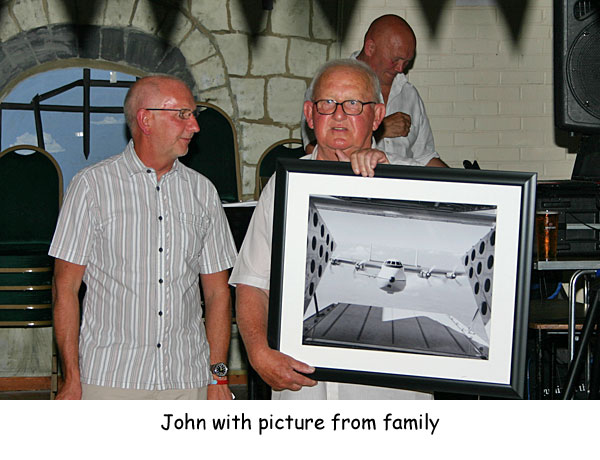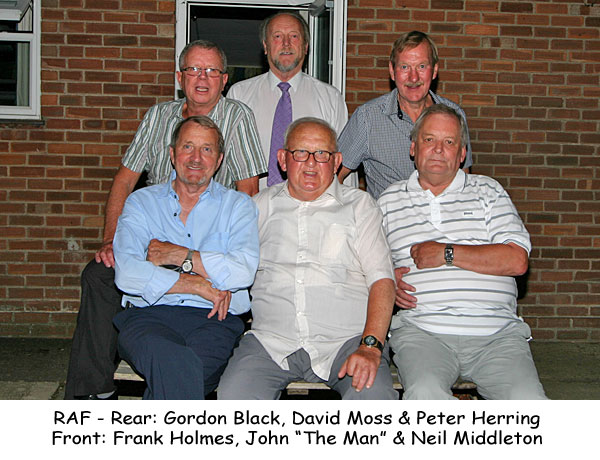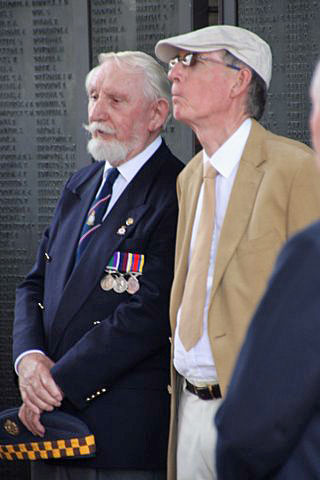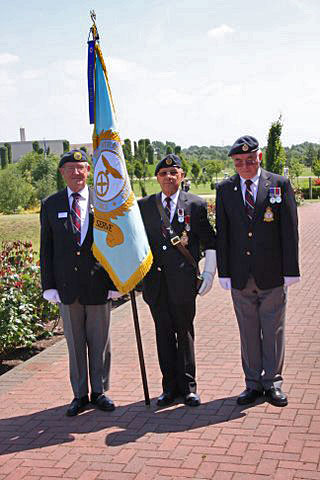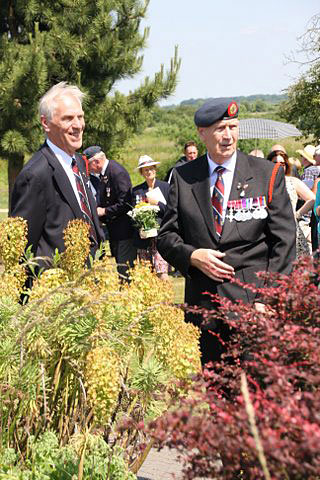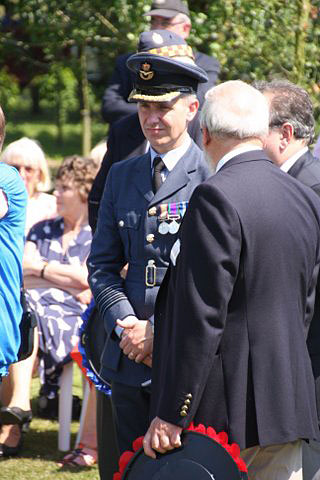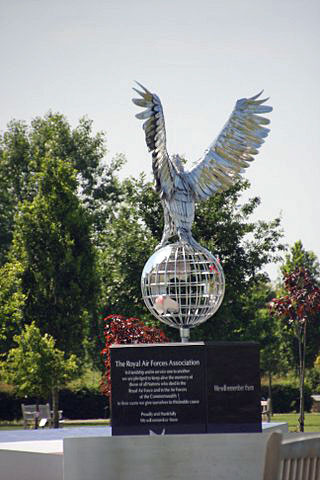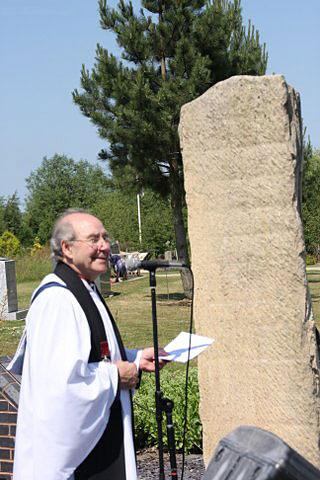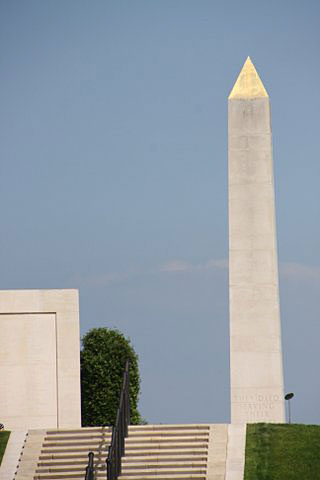Thatcher's flight to Falklands from RAF Brize Norton revealed
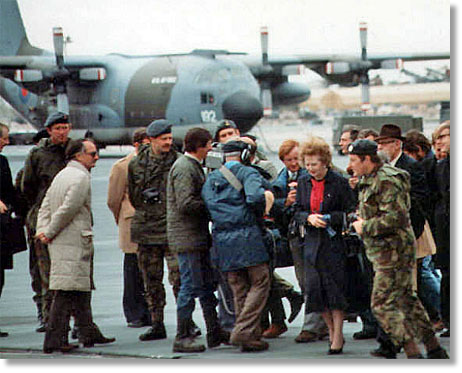
Newly-released Government memos reveal that Margaret Thatcher flew from Brize Norton to the Falklands Islands at a cost of more than £200,000 in 1983.
The then Prime Minister visited the islands for four days that January to mark the 150th anniversary of the establishment of a permanent British settlement.
It came eight months after the end of the conflict.
The documents, released ealier this month by the National Archives, include briefings from the Ministry of Defence marked “Secret UK Eyes A” about travel arrangements.
The PM was flown by the RAF to Ascension Island before being taken on a Hercules transport plane to Port Stanley, the islands' capital. The flights cost £209,867, an invoice shows.
Oxford Mail
The then Prime Minister visited the islands for four days that January to mark the 150th anniversary of the establishment of a permanent British settlement.
It came eight months after the end of the conflict.
The documents, released ealier this month by the National Archives, include briefings from the Ministry of Defence marked “Secret UK Eyes A” about travel arrangements.
The PM was flown by the RAF to Ascension Island before being taken on a Hercules transport plane to Port Stanley, the islands' capital. The flights cost £209,867, an invoice shows.
Oxford Mail
From: John Holloway, Shrewsbury
Sent: Wednesday, July 10, 2013 5:36 AM
Subject: NSRAFA Cosford Branch
Hi Tony,
Sent: Wednesday, July 10, 2013 5:36 AM
Subject: NSRAFA Cosford Branch
Hi Tony,
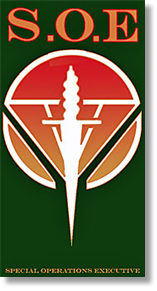
Anyhow, he showed us a catalogue of all the weapons and gadgets availble: the pencil bomb, the tyre buster hidden in horse excrement (where drivers would just run over it only to ignite an explosive device). The best was the plastic rat that was filled with plastic explosive and some bod would just shovel it into a boiler or similar and it would of course destroy it.
All these and many more devices that would harrass the Germans and keep them on their guard. The catalogue was printed in the early 40's so goodnes what would have happened if the Germans had got a copy of it!
All these and many more devices that would harrass the Germans and keep them on their guard. The catalogue was printed in the early 40's so goodnes what would have happened if the Germans had got a copy of it!
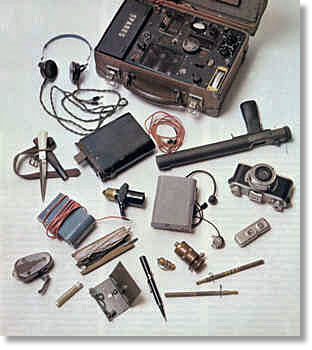
The two main aircraft that were used to get the agents into the occupied zones were the Lysander and the Hudson, and they ferried hundreds of agents into and out of Europe.
The SOE also operated in Africa and the Far East and he told us that they were instrumental in turning the French into being our allies in Madagascar after ousting the Vichy government there.
He told us that about 9,000 people were agents of which one-third perished at the hands of the Germans.
The SOE also operated in Africa and the Far East and he told us that they were instrumental in turning the French into being our allies in Madagascar after ousting the Vichy government there.
He told us that about 9,000 people were agents of which one-third perished at the hands of the Germans.
Cheers
John
p.s. Just a bit of info on the Cosford Branch. We are very active and over the next couple of months trips have been organised to RAF Brize Norton, Scampton, Conningsby, East Kirby and Waddington. Then in October a visit to the RAF's reseve collection at the former 16 Maintenance Unit at Stafford. We hope to have trips to RAF Valley and Bletchly Park. Have a look at our website.
John
p.s. Just a bit of info on the Cosford Branch. We are very active and over the next couple of months trips have been organised to RAF Brize Norton, Scampton, Conningsby, East Kirby and Waddington. Then in October a visit to the RAF's reseve collection at the former 16 Maintenance Unit at Stafford. We hope to have trips to RAF Valley and Bletchly Park. Have a look at our website.
First CH-147F Delivered To Canadian Military
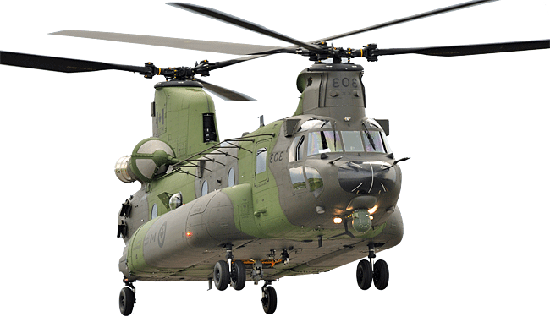
The Honourable Kerry-Lynne D. Findlay, Q.C., Associate Minister of National Defence responsible for military procurement and the Honourable Peter MacKay, Minister of National Defence, today [June 27] welcomed the delivery of the Canadian Armed Forces’ first new CH-147F Chinook helicopter at a ceremony at the Canada Reception Centre.
“The delivery of the new Chinook today clearly demonstrates our Government’s commitment to provide our Canadian Armed Forces with the right equipment to do the many challenging jobs we ask of them,” declared Minister Findlay. “The Canadian Chinook F-model - designed especially for Canada’s demanding operational and environmental requirements - will provide increased mobility and flexibility to the Royal Canadian Air Force.”
“The delivery of the new Chinook today clearly demonstrates our Government’s commitment to provide our Canadian Armed Forces with the right equipment to do the many challenging jobs we ask of them,” declared Minister Findlay. “The Canadian Chinook F-model - designed especially for Canada’s demanding operational and environmental requirements - will provide increased mobility and flexibility to the Royal Canadian Air Force.”
Ottawa Citizen
From: Tim Buckeridge, Calne, Wilts
Sent: Wednesday, July 10, 2013 4:32 AM
Subject: Help for Heroes
Dear colleagues and friends,
I am organising a collection for Help for Heroes at Tesco in Emery Gate, Chippenham on 14th and 15th September. It would be really great if a few people could come and give me a hand! If you can help, either e-mail me or register with H4H. Could you pass this to any members who may be available.
If you can't spare the time, it would still be good if you could drop by and say hi!
Thanks
Tim
Sent: Wednesday, July 10, 2013 4:32 AM
Subject: Help for Heroes
Dear colleagues and friends,
I am organising a collection for Help for Heroes at Tesco in Emery Gate, Chippenham on 14th and 15th September. It would be really great if a few people could come and give me a hand! If you can help, either e-mail me or register with H4H. Could you pass this to any members who may be available.
If you can't spare the time, it would still be good if you could drop by and say hi!
Thanks
Tim

From: David Moss, Clitheroe, Lancs
Sent: Sunday, July 14, 2013 11:07 AM
Subject: Party pictures.
Hi Tony
Please find attached a few pics from John Middleton's surprise party.
It was a good do and John did not know what was going on until he was about ten feet from the entrance to the party venue!
Cheers for now
David
Sent: Sunday, July 14, 2013 11:07 AM
Subject: Party pictures.
Hi Tony
Please find attached a few pics from John Middleton's surprise party.
It was a good do and John did not know what was going on until he was about ten feet from the entrance to the party venue!
Cheers for now
David
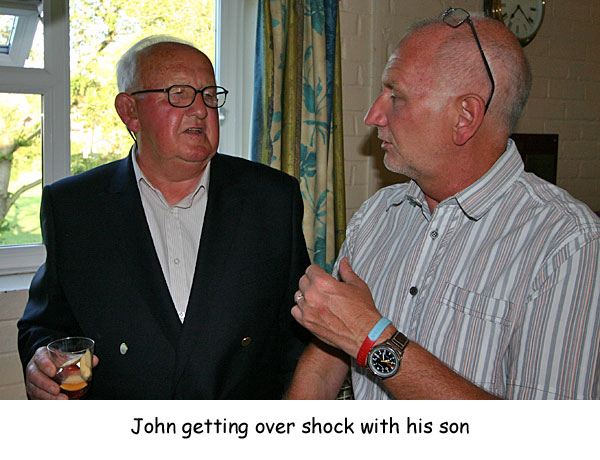
From: John Middleton, Huntingdon, Cambs
Sent: Sunday, July 14, 2013 3:38 AM
Subject: Thanks!
Dear Tony
Once again you, along with your website, have excelled yourself. I understand you also knew about my surprise party. Your e-mail made me smile when I read it, especially with the amount of people you sent Sue's request to! If I had of been in her shoes I would have panicked.
Needless to say I was well and truly 'stitched up'. However, the party was fabulous with a very good RAF turnout.
I wondered if you could make a simple post on your website thanking those who sent me cards, e-mails, gifts and also a special thank you to those who came on the day.
Cheers
John
Sent: Sunday, July 14, 2013 3:38 AM
Subject: Thanks!
Dear Tony
Once again you, along with your website, have excelled yourself. I understand you also knew about my surprise party. Your e-mail made me smile when I read it, especially with the amount of people you sent Sue's request to! If I had of been in her shoes I would have panicked.
Needless to say I was well and truly 'stitched up'. However, the party was fabulous with a very good RAF turnout.
I wondered if you could make a simple post on your website thanking those who sent me cards, e-mails, gifts and also a special thank you to those who came on the day.
Cheers
John
Our monthly get together and as usual a very good turn-out (after all we do meet in a pub!).
Our speaker was Doctor Baldwin; it was his second visit when last year he gave us a talk on the Enigma cypher machine
and Bletchly Park.
This time the talk was about the Special Operations Executive (SOE) in WWII, and called "Gadgets Galore". This was to be all about the various bombs, guns and aircraft used to ferry the agents to and from German occupied territories.
He told us that the SOE was formed in 1940 with Neville Chamberlain ("Peace in our Time" when he was Prime Minister),
who was, at the time, in the government cabinent and had the task of creating the charter by which the SOE would operate.
People who became agents had a 50/50 survival rate. Two notable operations they were invoved in were destroying a vital railway bridge in Greece and of course the Norwegian members who blew up the heavy water plant (Heroes of Telemark).
Our speaker was Doctor Baldwin; it was his second visit when last year he gave us a talk on the Enigma cypher machine
and Bletchly Park.
This time the talk was about the Special Operations Executive (SOE) in WWII, and called "Gadgets Galore". This was to be all about the various bombs, guns and aircraft used to ferry the agents to and from German occupied territories.
He told us that the SOE was formed in 1940 with Neville Chamberlain ("Peace in our Time" when he was Prime Minister),
who was, at the time, in the government cabinent and had the task of creating the charter by which the SOE would operate.
People who became agents had a 50/50 survival rate. Two notable operations they were invoved in were destroying a vital railway bridge in Greece and of course the Norwegian members who blew up the heavy water plant (Heroes of Telemark).
Where are the world's major military bases?

As the British government examines whether it could maintain Trident's base in an independent Scotland, here is a look at some of the major military bases on foreign soil - excluding Afghanistan - around the world.
With apologies to New Zealand (aka Middle Earth) for their exclusion from the map. Kindly address letters of complaint to: dtletters@telegraph.co.uk
UNITED KINGDOM:
1) Scotland - The Faslane base, on Gare Loch, is home to the UK's Trident nuclear submarine base.
2) Cyprus - Two bases, at Akrotiri and Dhekelia, were retained as British sovereign territory with independence in 1960. The bases are home to army, navy and RAF personnel.
3) Germany - British forces will have all left Germany by 2020. However, there remains a significant presence, with the Rhine Garrison as the headquarters. The US also has 48,000 soldiers in Germany.
1) Scotland - The Faslane base, on Gare Loch, is home to the UK's Trident nuclear submarine base.
2) Cyprus - Two bases, at Akrotiri and Dhekelia, were retained as British sovereign territory with independence in 1960. The bases are home to army, navy and RAF personnel.
3) Germany - British forces will have all left Germany by 2020. However, there remains a significant presence, with the Rhine Garrison as the headquarters. The US also has 48,000 soldiers in Germany.
From: Charles Collier, Ewhurst, Surrey
Sent: Sunday, June 30, 2013 3:48 PM
Subject: Padlocks
Hello again Tony,
Peter Clayton and I have something in common - padlocks and cycling!
The picture is from my tool work chest provided for Category 3 repair of all RAF aircraft north of a line drawn from Aberystwyth and the Wash. I had just passed out from Halton as a substantive corporal aged 20 years of age so you can imagine the ribbing I had in the corporals canteen! - that's another story!
Along with Pete I am a veteran cyclist with 100 miles per day not a problem - so keep at it Pete.
As to how I am still in possession of such a lock I can't remember other than when I left for commissioning they must have presented me with the trophy which now secures my garden tool shed!
All the best
Charles
Sent: Sunday, June 30, 2013 3:48 PM
Subject: Padlocks
Hello again Tony,
Peter Clayton and I have something in common - padlocks and cycling!
The picture is from my tool work chest provided for Category 3 repair of all RAF aircraft north of a line drawn from Aberystwyth and the Wash. I had just passed out from Halton as a substantive corporal aged 20 years of age so you can imagine the ribbing I had in the corporals canteen! - that's another story!
Along with Pete I am a veteran cyclist with 100 miles per day not a problem - so keep at it Pete.
As to how I am still in possession of such a lock I can't remember other than when I left for commissioning they must have presented me with the trophy which now secures my garden tool shed!
All the best
Charles
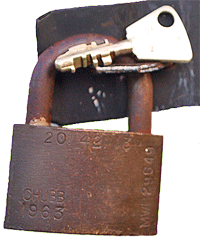
New members joining us recently are:
4) Gibraltar - The army has had a presence on the Rock for over 300 years, although the last UK-based infantry battalion left in 1991. It is now
home to the Royal Gibraltar Regiment, and acts as a Joint Operating Base for UK operations in the region.
5) Kenya - An army training unit in Nanyuki, 200km north of Nairobi, has 56 permanent staff and 110 rotating staff members, who work with the
troops coming in to train. Britain also has a peace support team in Kenya, working on security sector reform and mine removal.
6) Sierra Leone - Established in 2002 at the end of the civil war, Britain has a military advisory and training centre on the outskirts of Freetown.
7) Falklands - A combined force of army, navy and RAF is based on the islands.
8) Brunei - An infantry battalion and a Bell 212 helicopter flight are based in Brunei, which is used as a centre for jungle warfare training.
9) Canada - The training area in Alberta is equivalent in size to all the main training areas used by the British forces in the UK and Europe. About
1,000 tanks and armoured vehicles are kept there to train 7,000 troops each year.
UNITED STATES:
10) South Korea - There are 28,500 American troops based in Seoul, at the Yongsan Garrison. They will move to Camp Humphreys, 40 miles
south of the capital, later this year.
11) Japan - Okinawa is home to about half of America's 50,000 troops stationed in Japan.
12) Guam - Andersen Air Force base is home to bomber crews, while nuclear submarines are also housed here.
13) UK - America operates out of six RAF bases in the UK. RAF Croughton is one of the largest military communications centres in Europe, and
handles 30 percent of all US military traffic within Europe.
14) Diego Garcia - A British overseas territory, the island was home to the Chagossians - who were expelled by the British between 1968 and
1973 to make way for the American base. It is now uninhabited, except for military personnel.
15) Guantánamo Bay, Cuba - Cuba granted America complete jurisdiction and control over this remote part of the island in 1903, although Cuba
retains sovereignty. It is home to the Guantánamo Bay detention camp, opened in 2002 to hold prisoners from the "War on Terror".
16) Qatar - Approximately 5,000 troops are stationed between three bases and the US Combined Air Operations Centre. Most American troops left
Saudi Arabia in 2003, at the end of the Gulf War, and Qatar is now one of their main centres. They also have troops stationed in Bahrain (home to
the Fifth Fleet), Kuwait, Oman, UAE and Yemen. Overall in the Arabian Gulf region there are reportedly 40,000 American servicemen.
RUSSIA:
17) Ukraine - Sevastopol is home to Russia's Black Sea Fleet - the largest subunit of the navy.
18) Syria - Russia maintains a navy logistics centre in Tartus, with 16 ships. It is the only base outside of the former USSR. In January Russia was
forced to deny that it was withdrawing its personnel from the base, and emphasise that the centre was staffed by civilians, not military staff.
19) Tajikistan - Over 7,000 Russian troops are based in Tajikistan, making it their largest base in Central Asia. The present contract between
Russia and Tajikistan ends in 2014, but a new agreement has been signed which remains in force until 2042.
FRANCE:
20) Abu Dhabi - France opened its first military base in the Gulf in 2009 - the first foreign military installation built by the French for 50 years,
and its first centre in a country which was not a colony. It is home to 500 troops.
21) Djibouti - Home to France's largest base in Africa, plus a major US base.
telegraph.co.uk

RAF
Peter Herring, Gosport, Hants, UK
Eddie Mottram, Woodley, Berks, UK
Eddie Mottram, Woodley, Berks, UK
Barry Fletcher, Austin, TX, USA
Lee Matthews, Malmesbury, Wilts, UK
Lee Matthews, Malmesbury, Wilts, UK
Welcome to the OBA!
Afghanistan conflict: Men and women with bird’s eye view of war
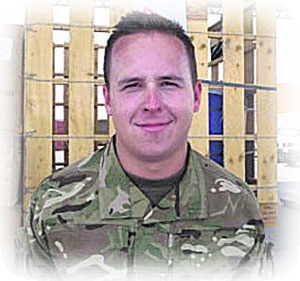
Senior Aircraftman Neil Robinson, 25, of 1 AMW, was part of the team that loaded Prime Minister and Witney MP David Cameron on to a plane during his recent trip to Afghanistan.
He said: “We had his aircraft but we didn’t know he was on board and he just popped out. We were responsible for getting everything on the aircraft and getting him away.”
Asked about the best part of the job, he said: “I enjoy the variety. We come into work every day and don’t know what to expect.”
SAC Robinson, originally from Swindon, said: “The hardest bit is the tiredness. You are constantly working 12-hour shifts and you don’t really get a lot of time to think about home, you just get on with the job.
"It's definitely busier with the drawdown [of troops returning home] and it is only going to get busier.”
He said: “We had his aircraft but we didn’t know he was on board and he just popped out. We were responsible for getting everything on the aircraft and getting him away.”
Asked about the best part of the job, he said: “I enjoy the variety. We come into work every day and don’t know what to expect.”
SAC Robinson, originally from Swindon, said: “The hardest bit is the tiredness. You are constantly working 12-hour shifts and you don’t really get a lot of time to think about home, you just get on with the job.
"It's definitely busier with the drawdown [of troops returning home] and it is only going to get busier.”
Not all RAF Brize Norton personnel are based at Kandahar. Men and women from 1 Air Mobility Wing (AMW), part of the Theatre Logistic Group, work as movers and are based at Camp Bastion, the main British base in Helmand province. They unload planes and helicopters when they land at Bastion - sometimes in as little as 45 minutes - before packing them up again with the next shipment. Between flights, they work to build and pack pallets with equipment.
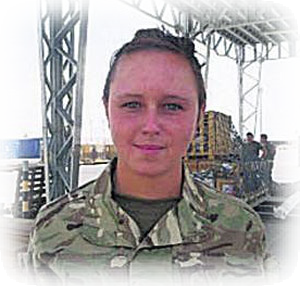
SAC Amy Sutton, 22, of 1 AMW, said: “Mostly it is building and netting pallets. “It is a bit repetitive, but the banter between us keeps us going. My team is me and four lads, and they’re like brothers to me.”
Asked about being the only female team member, she said: “I don’t find it difficult. I like to get stuck in and I get treated the same.”
SAC Sutton, from Maesteg, South Wales, was convinced to join the RAF by a friend who was in the air force. She said: “I like the physical part of the job, I couldn’t be stuck in an office all the time. I’ve surprised myself, because I thought I’d be homesick.
"Obviously I miss home but I’m not homesick. I’ve got five weeks left and then I can act like a girl and get out of the uniform.”
Her dream is to eventually join the police and help to “put naughty kids on the straight and narrow”.
Oxford Mail
Asked about being the only female team member, she said: “I don’t find it difficult. I like to get stuck in and I get treated the same.”
SAC Sutton, from Maesteg, South Wales, was convinced to join the RAF by a friend who was in the air force. She said: “I like the physical part of the job, I couldn’t be stuck in an office all the time. I’ve surprised myself, because I thought I’d be homesick.
"Obviously I miss home but I’m not homesick. I’ve got five weeks left and then I can act like a girl and get out of the uniform.”
Her dream is to eventually join the police and help to “put naughty kids on the straight and narrow”.
Oxford Mail
And Then There Were Three...
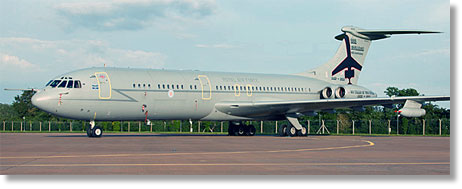
Another one of the U.K. Royal Air Force’s fleet of Vickers VC10 air-to-air refueling tankers ended its operational service. The retirement of aircraft XR808 also known to crews as “Bob” on July 29 leaves just three of the elegant British-built airliners left in service.
The flight was also significant as it heralded the last flight of an original Type 1101 VC10. The remaining three RAF VC10s are conversions of the Standard and Super VC10 variants.
The flight was also significant as it heralded the last flight of an original Type 1101 VC10. The remaining three RAF VC10s are conversions of the Standard and Super VC10 variants.
The fleet, due to retire this September will mark the end of a long era for the RAF which has been flying the aircraft since late 1966. The aircraft will be replaced by the fleet of Airtanker-operated Airbus A330 Voyager multi-role tanker transports which are currently being delivered.
While the A330 is significantly more capable than their 1960s predecessor, it is fair to say that the modern Airbus doesn’t quite have the presence of the VC10. The Vickers design has always been more than capable of making its presence felt with the scream of its four Rolls-Royce Conway engines and an inevitable trail of black smoke on landing and departure.
With an impressive 43,865 hours on the clock, XR808 was flown from its home at RAF Brize Norton where it served with 101 Sqn and was taken to the former USAF bomber base at Bruntingthorpe, Leicestershire. It had been earmarked for preservation at the RAF Museum in Cosford, but now its future is less clear.
The VC10 made its last public airshow appearance at the Royal International Air Tattoo at RAF Fairford on 20-21 July, but a retirement ceremony is planned at RAF Brize Norton, home of the VC10 fleet, during September.The RAF has flown 28 VC10s in several different configurations.
Once all the VC10s have gone, 101 Sqn will become the second squadron to form on the Voyager.
Aviation Week
While the A330 is significantly more capable than their 1960s predecessor, it is fair to say that the modern Airbus doesn’t quite have the presence of the VC10. The Vickers design has always been more than capable of making its presence felt with the scream of its four Rolls-Royce Conway engines and an inevitable trail of black smoke on landing and departure.
With an impressive 43,865 hours on the clock, XR808 was flown from its home at RAF Brize Norton where it served with 101 Sqn and was taken to the former USAF bomber base at Bruntingthorpe, Leicestershire. It had been earmarked for preservation at the RAF Museum in Cosford, but now its future is less clear.
The VC10 made its last public airshow appearance at the Royal International Air Tattoo at RAF Fairford on 20-21 July, but a retirement ceremony is planned at RAF Brize Norton, home of the VC10 fleet, during September.The RAF has flown 28 VC10s in several different configurations.
Once all the VC10s have gone, 101 Sqn will become the second squadron to form on the Voyager.
Aviation Week
JACOBS (Nairn) Peacefully, on June 19, 2013, at St. Olaf Nursing Home, Nairn, William (Bill) Jacobs, Sqn. Ldr. RAF Rtd., aged 93 years, of 5 Firhall House, Nairn. Beloved husband of Rose Mary Douglas, nee Morrison. Father of Michael and Ross, a loving grandfather and great-grandfather. Funeral service at the United Reformed Church, Nairn, on Tuesday, June 25, at 11.00 a.m., thereafter to Nairn Cemetery. Family flowers only, but donations in lieu, if desired, to RAF charities through RAFA. `We were but warriors of the working day'
Squadron Leader Bill Jacobs, affectionately known amongst the lads in Abingdon as "Jack Hobbs," was the first commanding officer of UKMAMS.
The only photograph I could locate of Sqn Ldr Jacobs, was from a medal presentation back in 1998. For the background information of this presentation please visit the source page: http://www.griffon.clara.net/19/medal.htm
The only photograph I could locate of Sqn Ldr Jacobs, was from a medal presentation back in 1998. For the background information of this presentation please visit the source page: http://www.griffon.clara.net/19/medal.htm
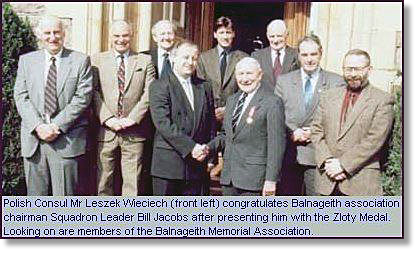
From: Gerry Davis, Bristol
Sent: Thursday, July 11, 2013 10:05 AM
Subject: The Boy Entrant meet at the National Memorial Arboretum
Dear Tony,
Back on Sunday the 7th July, two friends and I ventured north from this ancient city of Bristol to near the centre of this great country of ours, to visit the National Memorial Arboretum.
This was for the RAF Boy Entrants memorial service and wreath laying. None of us had this pleasure before and did not know what to expect from this 210 mile journey.
The whole day could not have been any more pleasant. The remembrance service, the weather, the atmosphere and meeting several of the "Old Boys" that I have got to know over the years has been etched within the remaining brain cell of mine forever more.
Sent: Thursday, July 11, 2013 10:05 AM
Subject: The Boy Entrant meet at the National Memorial Arboretum
Dear Tony,
Back on Sunday the 7th July, two friends and I ventured north from this ancient city of Bristol to near the centre of this great country of ours, to visit the National Memorial Arboretum.
This was for the RAF Boy Entrants memorial service and wreath laying. None of us had this pleasure before and did not know what to expect from this 210 mile journey.
The whole day could not have been any more pleasant. The remembrance service, the weather, the atmosphere and meeting several of the "Old Boys" that I have got to know over the years has been etched within the remaining brain cell of mine forever more.
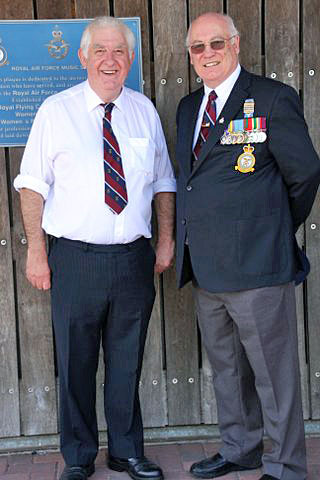
I really enjoyed the whole day out. Although, I might add there was not enough time to see all that there was to offer at this wonderful place.
There is still an awful lot more work to carry out, but let it be said that what has been completed, is "Top Notch" and well worth the visit. The time there flew by, what with all my gassing and shaking of many hands and it was only £3 for entry and to park all day. If I ever get to go there again I shall have to make arrangements to stay over at a nearby hostelry, so as to take it all in.
The two buddies that accompanied me were my best mate "Tiny" from the 30th Entry St Athans (he was airframes, but I have forgiven him!), together with an ex-sgt copper pal.
As I mentioned, it was a double pleasure for me to eventually meet some of the guys of the "Hereford Bullocks" that I have corresponded with for quite a while. Putting faces to names and the general chit-chat which ensued I found to be exhilarating and well worth the trip.
I have also emailed, to thank, some of the guys that I had the pleasure to meet, together with Cannon Tony Porter, (9th Entry, our personal Padre) who as one of us shared our common RAF service life. He always gives out a feeling of togetherness and provides that final touch with his prayers and selection of hymns.
Finally, the unscheduled stop for something to eat at a roadside 'Ale House' became another event that topped off the day and unexpectedly gave me the opportunity to once again say my farewells to a group of ex Boy Entrants with whom I was proud to have served my country.
Gerry Davis
There is still an awful lot more work to carry out, but let it be said that what has been completed, is "Top Notch" and well worth the visit. The time there flew by, what with all my gassing and shaking of many hands and it was only £3 for entry and to park all day. If I ever get to go there again I shall have to make arrangements to stay over at a nearby hostelry, so as to take it all in.
The two buddies that accompanied me were my best mate "Tiny" from the 30th Entry St Athans (he was airframes, but I have forgiven him!), together with an ex-sgt copper pal.
As I mentioned, it was a double pleasure for me to eventually meet some of the guys of the "Hereford Bullocks" that I have corresponded with for quite a while. Putting faces to names and the general chit-chat which ensued I found to be exhilarating and well worth the trip.
I have also emailed, to thank, some of the guys that I had the pleasure to meet, together with Cannon Tony Porter, (9th Entry, our personal Padre) who as one of us shared our common RAF service life. He always gives out a feeling of togetherness and provides that final touch with his prayers and selection of hymns.
Finally, the unscheduled stop for something to eat at a roadside 'Ale House' became another event that topped off the day and unexpectedly gave me the opportunity to once again say my farewells to a group of ex Boy Entrants with whom I was proud to have served my country.
Gerry Davis
Woman RAF officer joins top military brass
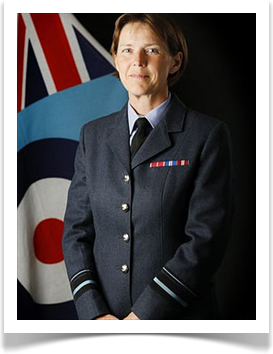
The RAF has promoted a female officer to the most senior position ever to be held by a woman in the UK armed forces.
The air force has appointed its first female two-star officer, Air Vice Marshal Elaine West, the Ministry of Defence has announced.
AVM West, 51, joined the RAF straight from school and is married with a teenage son.
Defence Secretary Philip Hammond said it showed there was no "glass ceiling" for female officers.
The position is equivalent in rank to a major general in the Army or a rear admiral in the Navy.
The new air vice marshal will be director of projects and programme delivery at the Defence Infrastructure Organisation.
She will lead on multi-million pound infrastructure projects to support military training, and oversee the drawdown of army units from Germany.
The air force has appointed its first female two-star officer, Air Vice Marshal Elaine West, the Ministry of Defence has announced.
AVM West, 51, joined the RAF straight from school and is married with a teenage son.
Defence Secretary Philip Hammond said it showed there was no "glass ceiling" for female officers.
The position is equivalent in rank to a major general in the Army or a rear admiral in the Navy.
The new air vice marshal will be director of projects and programme delivery at the Defence Infrastructure Organisation.
She will lead on multi-million pound infrastructure projects to support military training, and oversee the drawdown of army units from Germany.
BBC News
From: Don Hunter, St. Maxim
Sent: Saturday, July 13, 2013 7:57 AM
Subject: Proposed Demolition of the Lyneham Chapel of Rest
Tony,
This might be of interest to all those who served at Lyneham.
Please sign the petition if you feel strongly about it.
http://www.bbc.co.uk/go/em/fr/-/news/uk-england-wiltshire-23266341
Best wishes
Don Hunter
Sent: Saturday, July 13, 2013 7:57 AM
Subject: Proposed Demolition of the Lyneham Chapel of Rest
Tony,
This might be of interest to all those who served at Lyneham.
Please sign the petition if you feel strongly about it.
http://www.bbc.co.uk/go/em/fr/-/news/uk-england-wiltshire-23266341
Best wishes
Don Hunter
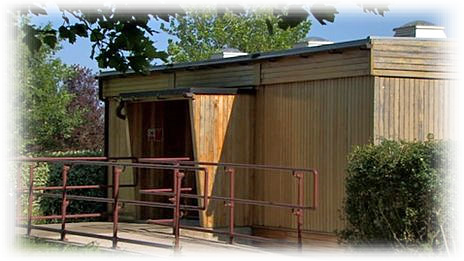
Final farewell for "Oz" Oswald...
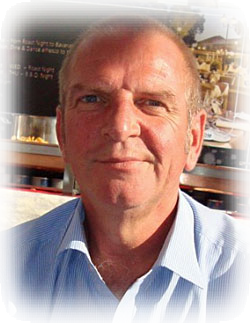
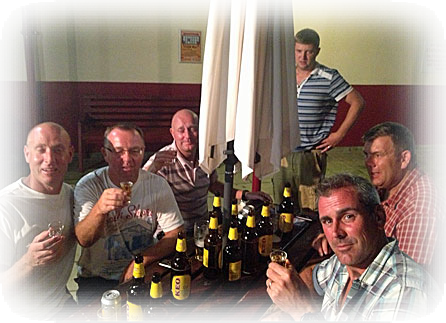
Akrotiri raising a glass to Oz Oswald, "One for the road mate!" with Mark Taff Gibbons, Dean Richardson, Chris Hall, Andrew Holloway and Kevin Skinner.
Trevor’s funeral will take place at 12 noon, Tuesday,
September 3rd, 2013, at The Church of St John the
Evangelist, 6 Burford Road, Carterton, OX18 3AA
For those unable to attend, the service will be
There will be a gathering afterwards at the Golden
Eagle in Carterton.
From: David Howley, Melton Mowbray
Sent: Friday, June 28, 2013 04:25
Subject: RAF Mystery Photo 062813
Hi Tony,
RAF Mystery photo; It could be the Yemen Air Force, IL-14, flown by Egyptian crew, landed by mistake at Lodar, early 1964. On dump at RAF Khormaksar, 1964-66 - never did manage to get over there to photo it!
Memory is a funny thing - I do not recall the windmills, so it may not be K’sar.
Regards
David
Sent: Friday, June 28, 2013 04:25
Subject: RAF Mystery Photo 062813
Hi Tony,
RAF Mystery photo; It could be the Yemen Air Force, IL-14, flown by Egyptian crew, landed by mistake at Lodar, early 1964. On dump at RAF Khormaksar, 1964-66 - never did manage to get over there to photo it!
Memory is a funny thing - I do not recall the windmills, so it may not be K’sar.
Regards
David
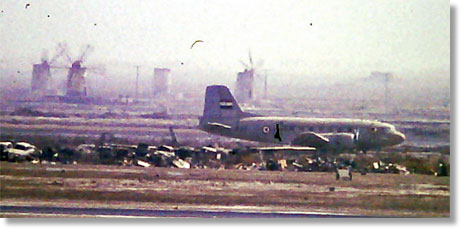
[Located on the road from Khormaksar to Sheikh Othman and Little Aden, the salt works were a landmark that date back to the late eighteen hundreds.
The old windmills were used to pump sea water into the pans where it was allowed to evaporate and leave behind the raw salt crystals. The windmills would then pump more water into the pans and from pan to pan until the level of salt built up to a point where it could be harvested and sold.]
The old windmills were used to pump sea water into the pans where it was allowed to evaporate and leave behind the raw salt crystals. The windmills would then pump more water into the pans and from pan to pan until the level of salt built up to a point where it could be harvested and sold.]
Adventures and mishaps recalled from 50 years of flying military's Sea Kings
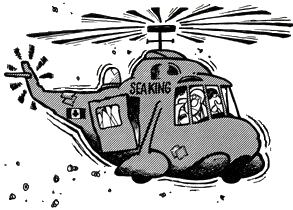
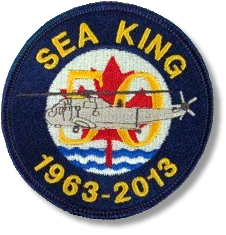
As the rear door of the Sea King helicopter flew open, crew member John Barker was sucked out and left clinging to the side by his fingernails, his feet pressing a wheel well.
Pilot John Cody recalls reacting instinctively during the June 12, 1970, incident as dust kicked up in his cockpit from the unexpected air suction. He banked the chopper sharply, sending it sideways and keeping Barker sprawled across the fuselage.
Three crew members in the rear joined hands, and Barker was pulled to safety as the helicopter kept flying 100 metres over the water south of Halifax, travelling 270 kilometres per hour.
"He would have split open if he'd hit the waters from that height, so he's a very lucky man," said Cody, now retired.
Pilot John Cody recalls reacting instinctively during the June 12, 1970, incident as dust kicked up in his cockpit from the unexpected air suction. He banked the chopper sharply, sending it sideways and keeping Barker sprawled across the fuselage.
Three crew members in the rear joined hands, and Barker was pulled to safety as the helicopter kept flying 100 metres over the water south of Halifax, travelling 270 kilometres per hour.
"He would have split open if he'd hit the waters from that height, so he's a very lucky man," said Cody, now retired.
The moment of sheer terror is one story air crew and maintenance workers shared recently in Halifax as they gathered to recall the 50-year history of Canada's Sea King helicopters. A series of events took place for three days, including a tribute at the Grand Parade.
But as they marked the golden anniversary, tales of survival are mixed with questions over how much longer the helicopters should be allowed to fly.
Aaron Plamondon, an historian at Mount Royal University in Calgary, says the anniversary is a date that should concern Canadians because there is no replacement ready to take over for the aging aircraft.
"A 50-year anniversary means that they can no longer provide reliable and effective service to a modern navy that needs the latest sensors and avionics at sea," said Plamondon, who is also the author of "The Politics of Procurement," a history of the replacement effort.
Aaron Plamondon, an historian at Mount Royal University in Calgary, says the anniversary is a date that should concern Canadians because there is no replacement ready to take over for the aging aircraft.
"A 50-year anniversary means that they can no longer provide reliable and effective service to a modern navy that needs the latest sensors and avionics at sea," said Plamondon, who is also the author of "The Politics of Procurement," a history of the replacement effort.
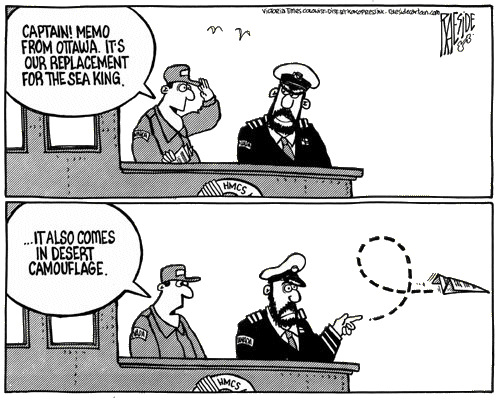
"The longer the Sea Kings fly, the more it costs the Canadian taxpayer as they are very expensive to maintain at this point."
In 1993, then-Liberal prime minister Jean Chretien cancelled a $4.8-billion procurement contract that would have provided 43 EH-101 helicopters intended to replace the Sea Kings.
Eleven years later, Ottawa signed contracts worth $5 billion with Sikorsky to build 28 H-92 Cyclone helicopters.
They were originally due to start relieving the Sea Kings in 2008 but they have experienced a series of delays and cost overruns.
Former Sea King pilot John Orr - the author of "Perseverance: The Canadian Sea King Story" - prefers to focus on its ability to adapt from its original job as a Cold War submarine hunter to tasks such as hauling supplies over the deserts of Somalia, monitoring surface vessels in the First Gulf War and chasing drug runners off the coast.
In 1993, then-Liberal prime minister Jean Chretien cancelled a $4.8-billion procurement contract that would have provided 43 EH-101 helicopters intended to replace the Sea Kings.
Eleven years later, Ottawa signed contracts worth $5 billion with Sikorsky to build 28 H-92 Cyclone helicopters.
They were originally due to start relieving the Sea Kings in 2008 but they have experienced a series of delays and cost overruns.
Former Sea King pilot John Orr - the author of "Perseverance: The Canadian Sea King Story" - prefers to focus on its ability to adapt from its original job as a Cold War submarine hunter to tasks such as hauling supplies over the deserts of Somalia, monitoring surface vessels in the First Gulf War and chasing drug runners off the coast.
"It's not a sports car," he said. "It's a truck, but it's reliable like a truck and it's very utilitarian like a truck. What constantly amazes me is how the people - the technicians and the air crew - have been able to keep this thing going and doing a good job."
The helicopter purchase was announced in the fall of 1962, and the first aircraft - Sea Kings 4001 and 4002 - flew to Canadian Forces Base Shearwater on the outskirts of Halifax on Aug. 1, 1963.
The helicopter purchase was announced in the fall of 1962, and the first aircraft - Sea Kings 4001 and 4002 - flew to Canadian Forces Base Shearwater on the outskirts of Halifax on Aug. 1, 1963.
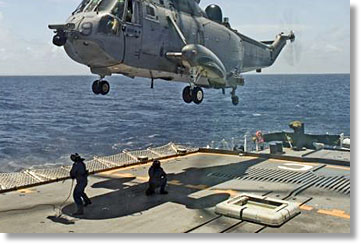
Gordon Gray, one of the first pilots, said he was awed by their capabilities. Sitting in the Shearwater Aviation Museum before its predecessor, the Sikorsky "Horse" S-55- he holds a photo of himself in the light fatigues of the time, standing before the new Sea King.
"We were going from flying a Model T to driving a modern Cadillac," said Gray, 75. He recalled how the Canadian military used the Sea Kings aboard destroyers and the aircraft carrier HMCS Bonaventure during exercises in the North Atlantic, training to play cat and mouse with Russian subs.
Base technicians and Canadian industry pioneered a "Beartrap" system to winch the aircraft onto warships, an innovation that revolutionized the ability of the ships to monitor Russia's fleet.
"We were going from flying a Model T to driving a modern Cadillac," said Gray, 75. He recalled how the Canadian military used the Sea Kings aboard destroyers and the aircraft carrier HMCS Bonaventure during exercises in the North Atlantic, training to play cat and mouse with Russian subs.
Base technicians and Canadian industry pioneered a "Beartrap" system to winch the aircraft onto warships, an innovation that revolutionized the ability of the ships to monitor Russia's fleet.
Jim Clarke was a 22-year-old captain on Feb. 7, 1969, when he experienced the helicopter's ability to survive. After lifting off at night from HMCS Bonaventure, the helicopter was sucked up by a waterspout, a gyrating column of water formed by a whirlwind above the sea. It twirled around like a top, rising about 420 metres in less than a minute before being spit out from the top of the funnel. "The four of us got back to the carrier fine. The aircraft was shut down, checked over by maintenance and went flying the next day," he recalls with a smile.
As the Cold War came to an end, pilots like Cody and Larry McWha rose up the ranks to senior positions and found themselves adapting to new missions such as the First Gulf War.
McWha recalls returning to CFB Shearwater with a Sea King squadron on April 7, 1991, after serving in battle to remove Saddam Hussein's troops from Kuwait. Before the assignment, maintenance crews had worked feverishly for 10 days, stripping the Sea Kings of anti-sub warfare and refitting them with weapons systems and night-vision equipment.
During the war, the helicopters saw the eerie signals on new gear telling them they'd been targeted by anti-aircraft guns or missiles, forcing the pilots to take evasive measures in case the threat became reality.
"The most memorable moment was leading the squadron back ... the same five aircraft and the same crews, all in one piece," said McWha.
McWha recalls returning to CFB Shearwater with a Sea King squadron on April 7, 1991, after serving in battle to remove Saddam Hussein's troops from Kuwait. Before the assignment, maintenance crews had worked feverishly for 10 days, stripping the Sea Kings of anti-sub warfare and refitting them with weapons systems and night-vision equipment.
During the war, the helicopters saw the eerie signals on new gear telling them they'd been targeted by anti-aircraft guns or missiles, forcing the pilots to take evasive measures in case the threat became reality.
"The most memorable moment was leading the squadron back ... the same five aircraft and the same crews, all in one piece," said McWha.
The former squadron commanding officer says the Sea Kings frequently had technical challenges, such as malfunctioning sonar gear and transmission difficulties, often forcing the cancellation of missions and training tasks.
"You'd take off in a perfectly serviceable mission and then something breaks on you or fails on you, and you have to abort the mission," McWha said. The irony, he adds, is that today the aircraft are more reliable, as technicians have dealt with almost every conceivable problem through the decades.
When the aviators and maintenance technicians gathered, there were sombre moments, as they recalled crashes or mishaps that took 10 lives over the years.
McWha struggled to keep his composure as he recalled a fiery 1994 crash into a hillside near Saint John, N.B. "I had to take a call from the pilot's mother who had heard the news on the radio in Peterborough, Ont., and I confirmed to her that her son had perished," he said. A fuel line had frayed and leaked, feeding a fire roaring on the helicopter.
"You'd take off in a perfectly serviceable mission and then something breaks on you or fails on you, and you have to abort the mission," McWha said. The irony, he adds, is that today the aircraft are more reliable, as technicians have dealt with almost every conceivable problem through the decades.
When the aviators and maintenance technicians gathered, there were sombre moments, as they recalled crashes or mishaps that took 10 lives over the years.
McWha struggled to keep his composure as he recalled a fiery 1994 crash into a hillside near Saint John, N.B. "I had to take a call from the pilot's mother who had heard the news on the radio in Peterborough, Ont., and I confirmed to her that her son had perished," he said. A fuel line had frayed and leaked, feeding a fire roaring on the helicopter.
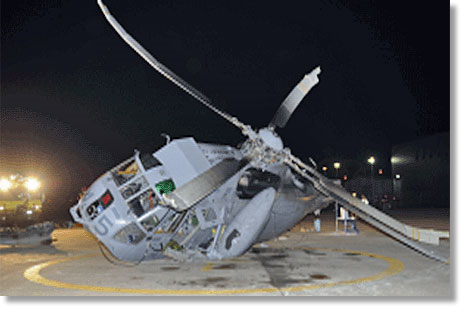
That crash and other ditchings and aborted missions in the past three decades have brought the issue of replacing the Sea Kings to the fore.
The original fleet of 41 has dropped to 25 aircraft today, some of which are also stationed in Patricia Bay, B.C.
Just a few weeks ago, one of the Sea Kings tipped over and smashed its rotor blades on the tarmac of CFB Shearwater, sending pieces flying into nearby buildings.
Cody acknowledges the frustrations of cancelled and delayed replacement programs, but says Thursday is a day to recognize accomplishment by thousands of Canadians who've kept the Sea Kings in the air.
"We went from crisis to crisis to crisis," he said. "The Sea Kings are put on navy ships which are pointed out and away they go out. They're always the first ones there. In that sense, there is a great sense of accomplishment."
Times Colonist
The original fleet of 41 has dropped to 25 aircraft today, some of which are also stationed in Patricia Bay, B.C.
Just a few weeks ago, one of the Sea Kings tipped over and smashed its rotor blades on the tarmac of CFB Shearwater, sending pieces flying into nearby buildings.
Cody acknowledges the frustrations of cancelled and delayed replacement programs, but says Thursday is a day to recognize accomplishment by thousands of Canadians who've kept the Sea Kings in the air.
"We went from crisis to crisis to crisis," he said. "The Sea Kings are put on navy ships which are pointed out and away they go out. They're always the first ones there. In that sense, there is a great sense of accomplishment."
Times Colonist
From: John Holloway, Shrewsbury
Sent: Tuesday, August 13, 2013 11:54 AM
Subject: NSRAFA Cosford Branch
Hi Tony,
Or speaker today was Squadron Leader (Retired) Richard Painter. It was his second visit to us and this time the subject of his talk was on notable bombing missions (his previous talk being on unmanned aircraft against insurgents in Afghanistan).
Sent: Tuesday, August 13, 2013 11:54 AM
Subject: NSRAFA Cosford Branch
Hi Tony,
Or speaker today was Squadron Leader (Retired) Richard Painter. It was his second visit to us and this time the subject of his talk was on notable bombing missions (his previous talk being on unmanned aircraft against insurgents in Afghanistan).

His talk covered both strategic and tactical bombing commencing with WW1 and the Zepplin airships; the first being in June 1915 on London and as far up as Walsall.
The first building to be hit was a pub, the Neville Arms in London, then the raids on Great Yarmouth and the East Coast. Later on with the first bombers to be used in war, the Gotha (pictured at left). Both the Zepplin and the Gotha were used on civilian targets and not military ones.
The first building to be hit was a pub, the Neville Arms in London, then the raids on Great Yarmouth and the East Coast. Later on with the first bombers to be used in war, the Gotha (pictured at left). Both the Zepplin and the Gotha were used on civilian targets and not military ones.
He then gave us a description of the indiscriminent bombing of cities in WW2 which, in his opinion, was inefective as it really made us more determined to fight on.
Civilians killed in Great Britain were over sixty thousand, while in Germany there were in excess of four hundred thousand. One fact that surprised us was the Allied bombing of the French cities on and after the D-Day invasion which killed over sixty thousand civilians.
He described the 1967 Israeli bombing of Egyptian targets, which was most effective in almost destroying the entire Egyptian air force.
Civilians killed in Great Britain were over sixty thousand, while in Germany there were in excess of four hundred thousand. One fact that surprised us was the Allied bombing of the French cities on and after the D-Day invasion which killed over sixty thousand civilians.
He described the 1967 Israeli bombing of Egyptian targets, which was most effective in almost destroying the entire Egyptian air force.
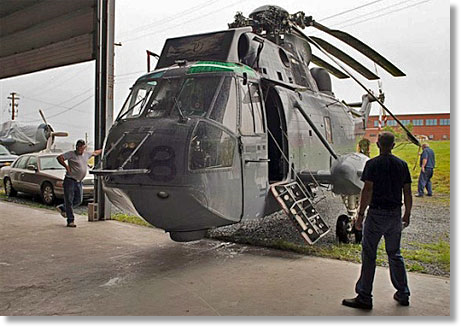
An RCAF Sea King helicopter is moved to the Shearwater Aviation Museum
His talk continued with his decription of the bombings in Korea, Viet Nam, Iraq and Libya. The Black Buck raids by the Vulcans (pictured at right) on the Falklands made a few holes in the airstrip but didn't stop them using it and their Super Etands kept on the mainland out of harms way but they still used them with great effect on our ships.
All in all I think he gave most of us fresh thoughts on the subject. He took nothing away from our lads of Bomber Comand who carried out what they were told to do, but at what cost?
Cheers
John
All in all I think he gave most of us fresh thoughts on the subject. He took nothing away from our lads of Bomber Comand who carried out what they were told to do, but at what cost?
Cheers
John
Air force chiefs get the A400M experience
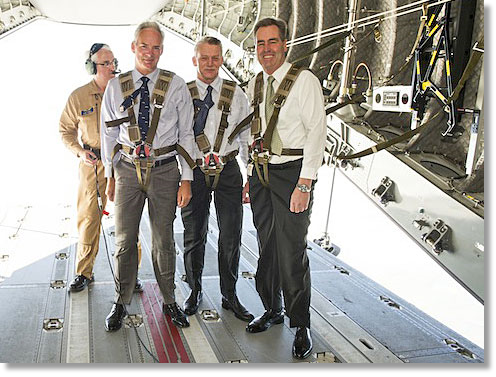
The Chiefs of the Air Forces of Australia, New Zealand and the UK took the opportunity to fly in the Airbus Military A400M at the recent Royal International Air Tattoo airshow at Fairford in the UK.
The photo shows, left to right: ACM Sir Andrew Pulford, Royal Air Force; AVM Peter Stockwell, RNZAF; and AM Geoff Brown, RAAF; standing on the open ramp during the flight accompanied by an Airbus Military loadmaster.
Aviation Business
The photo shows, left to right: ACM Sir Andrew Pulford, Royal Air Force; AVM Peter Stockwell, RNZAF; and AM Geoff Brown, RAAF; standing on the open ramp during the flight accompanied by an Airbus Military loadmaster.
Aviation Business
From: John Wickham, Abu Dhabi
Sent: Wednesday, August 14, 2013 2:13 PM
Subject: Job Vacancies
Sent: Wednesday, August 14, 2013 2:13 PM
Subject: Job Vacancies
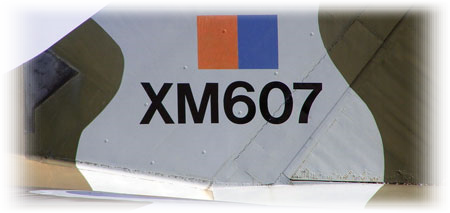
Manager Cargo Services Hong Kong
Warehouse Operations Manager KSA
Can anyone guess this place?

Kind regards
John
John
Another RAAF house hits the road
THE third home to be relocated from the RAAF base in the Darwin suburb of Eaton was removed on the back of a truck.
Northern Transportables project manager Scott McMillan said yesterday it was the final house to be moved under the watchful eye of NT Police.
"We started moving on Sunday as per our traffic management plan,'' he said.
"They (police) have given us the all clear.''
The rest of the 277 homes will be taken down the Stuart Highway to a holding yard in Berrimah over the next three years.
Northern Transportables project manager Scott McMillan said yesterday it was the final house to be moved under the watchful eye of NT Police.
"We started moving on Sunday as per our traffic management plan,'' he said.
"They (police) have given us the all clear.''
The rest of the 277 homes will be taken down the Stuart Highway to a holding yard in Berrimah over the next three years.
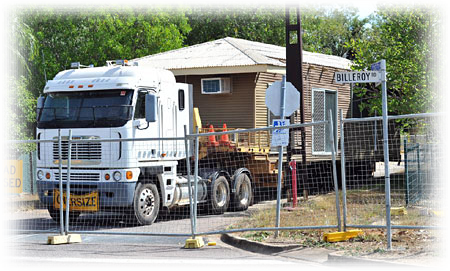
Mr McMillan said the company had been working on the base for the past 10 weeks doing small demolitions to get the houses ready for relocation.
He said there had been plenty of interest from people wanting to buy the homes.
"A lot of interest we've had is from Territorians looking at developing a block or putting a house on a rural block,'' he said.
"Most of the time they are all elevated homes with living areas upstairs.
"They're in good condition and they'll be quite successful once people get wind of them.''
Mr McMillan said there would be about four or five moves per week but it would not happen during peak traffic times.
NTNews
He said there had been plenty of interest from people wanting to buy the homes.
"A lot of interest we've had is from Territorians looking at developing a block or putting a house on a rural block,'' he said.
"Most of the time they are all elevated homes with living areas upstairs.
"They're in good condition and they'll be quite successful once people get wind of them.''
Mr McMillan said there would be about four or five moves per week but it would not happen during peak traffic times.
NTNews
From: Andrew Kay, Colorado Springss, CO
Sent: Thursday, May 23, 2013 15:06
Subject: Videos
Sent: Thursday, May 23, 2013 15:06
Subject: Videos
Hi Tony,
Here's the last in the series of videos that would be of interest to the old hands - "Jungle Life Line" from 1961
Regards
Andy
Here's the last in the series of videos that would be of interest to the old hands - "Jungle Life Line" from 1961
Regards
Andy
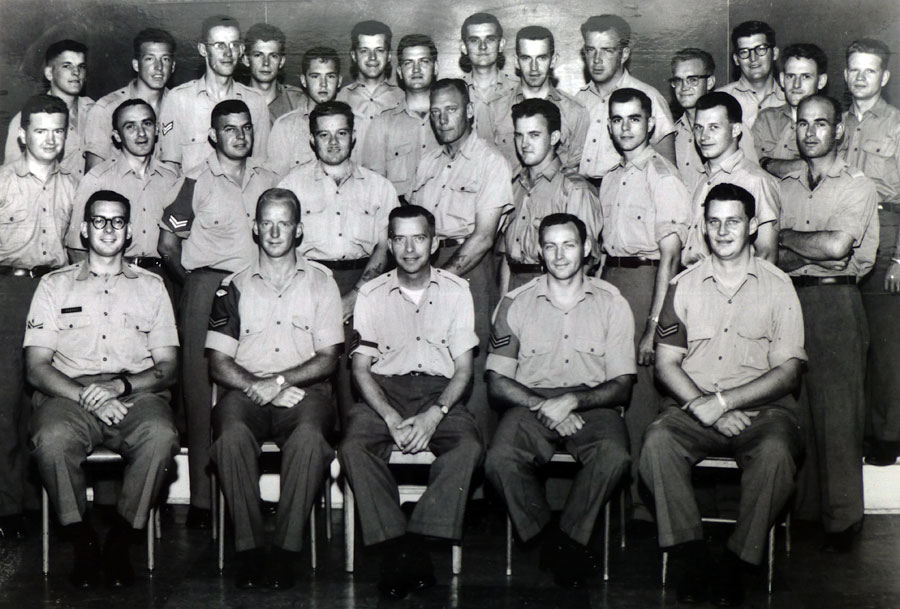
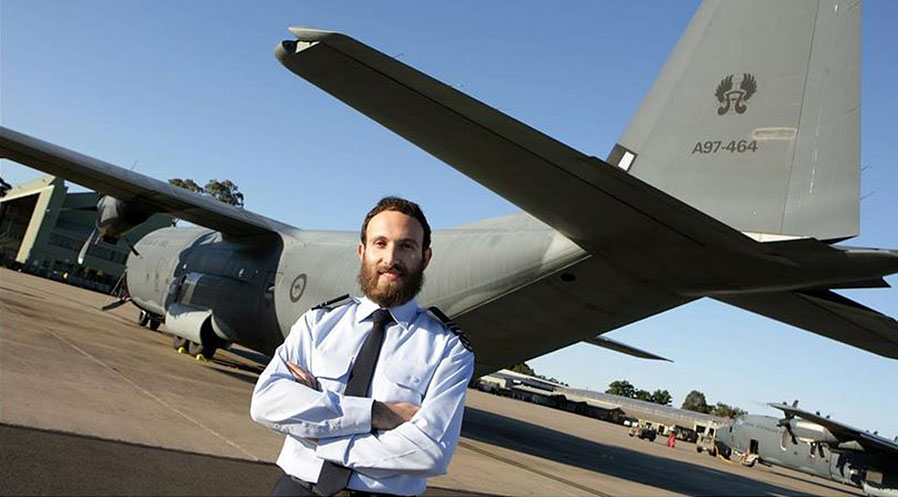

This issue is dedicated
to the memories of
Bill Jacobs
&
Oz Oswald









